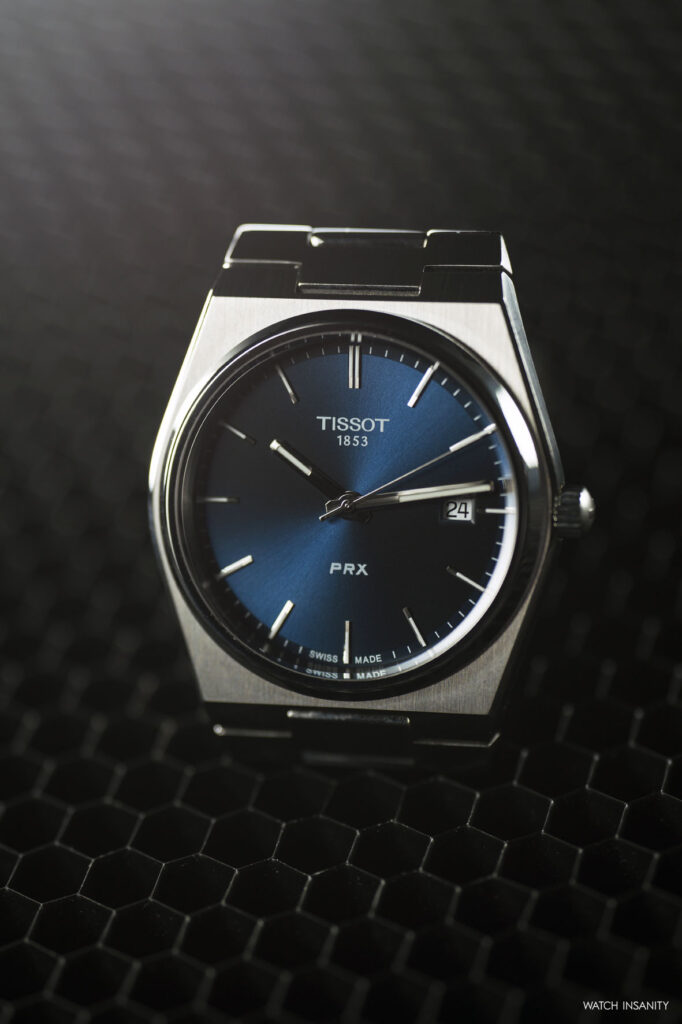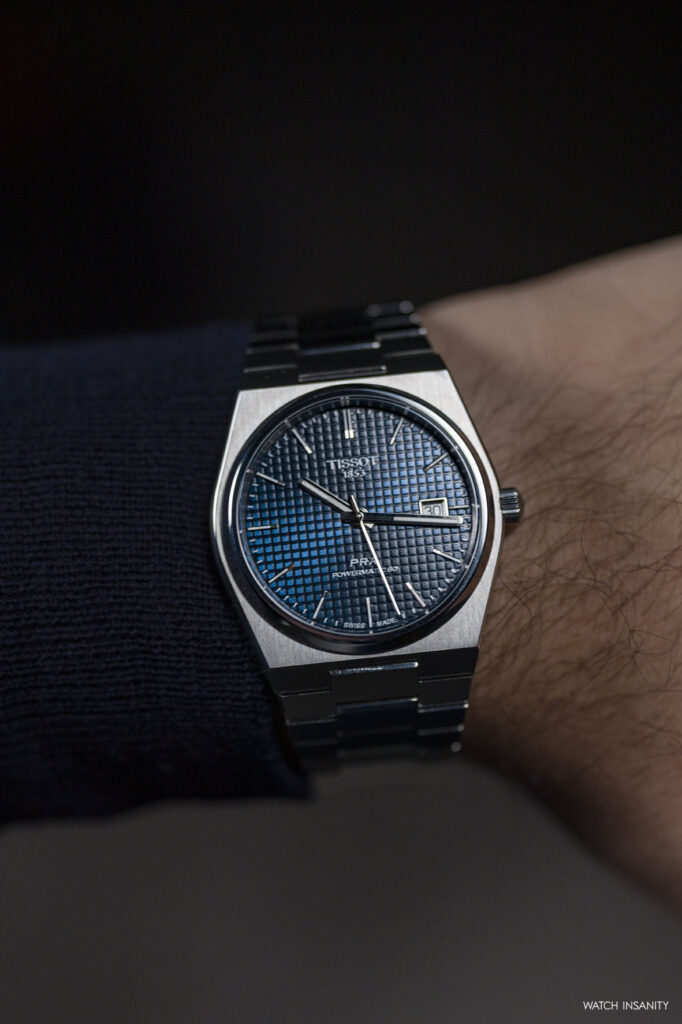Tissot PRX: The evolution of the species
6 December 2021The Tissot PRX is a child of its time. We’re talking about the original one, born during a decade in which watchmaking was all about experimentation, avant-garde, breaking the mold. A decade that for many watchmaking enthusiasts represents a black hole, in which quartz was close to bringing down the Swiss mechanical watchmaking industry. For others, however, that decade – we are speaking of the 1970s, of course – was the richest moment in terms of design, and quartz was an opportunity, for traditional watchmakers, to reflect, reorganize, restart. Just then, the Tissot PRX was born.
It was 1978 and the Le Locle brand launched its own interpretation of the new avant-garde watchmaking on the market. The Tissot PRX was in all respects a child of its time: integrated bracelet into a tonneau case, reduced thickness, airy and easily legible dial. Everything that the market asked for and that Tissot was able to provide. That’s all.
TISSOT PRX: FIRST COMES QUARTZ…
After more than 40 years, Tissot re-proposed the PRX in a more contemporary version which, however, does not leave aside the teachings of the past. The watch is one of the first aces that CEO Sylvain Dolla played after his appointment in July 2020. An ace that allowed the brand to draw on its history, modernizing it.
The version of the Tissot PRX 2020 is a quartz, an ETA F06.115 caliber telling time and date, with a battery life of over five years. Thanks to an indicator called EOL, “end-of-life”, when the battery charge is about to end, the second hand jumps only every four seconds while the watch continues to indicate the exact time until the battery runs out completely.
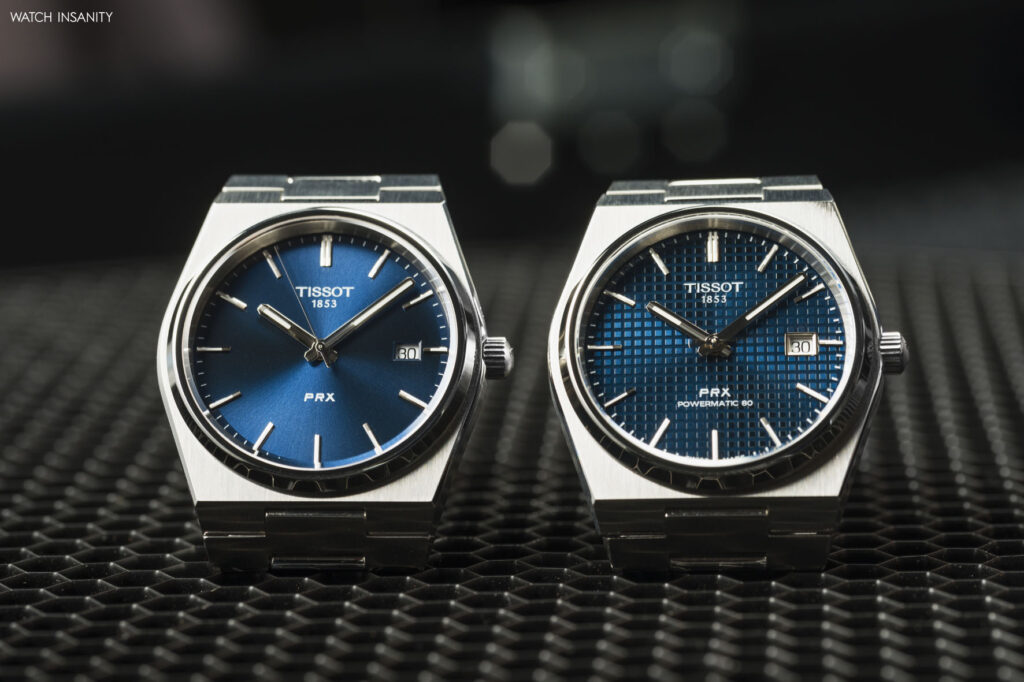
One more detail highlighting the quality of the watch, but which is not enough for the mechanical movements purists. Since its press presentation last year, many asked Dolla when an automatic version of the PRX would be available. The story, the tribute to the 70s and all the rest are great, but the balance wheel fanatics wanted more. And they got it, even if they had to wait a few months.
…AND THEN THE TISSOT PRX POWERMATIC 80
Tissot presented the new PRX Powermatic 80, delivering on the quality promises that the quartz version had largely kept. The brand has chosen to equip it with its top-of-the-range movement, the Powermatic 80. And it’s right from there, from the heart of the watch, that we want to start describing it.
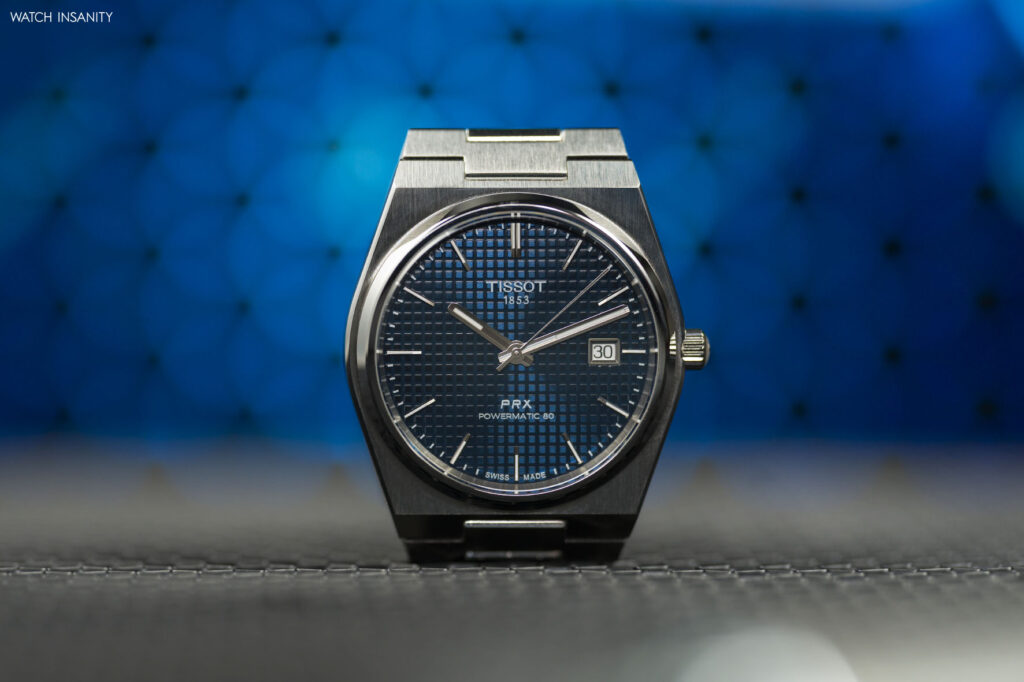
The Powermatic 80 is a derivation of an automatic caliber made by Eta (a historic Swiss movement company, now owned by the Swatch Group), the 2824-2, customized for Tissot. The same movement comes in a series of variations, encased only by brands that are part of the group (Mido, Certina, Tissot); it’s a caliber of excellent workmanship, equipped with a silicon hairspring, therefore with anti-magnetic properties, and above all with an important power reserve of 80 hours, hence the name of the caliber.
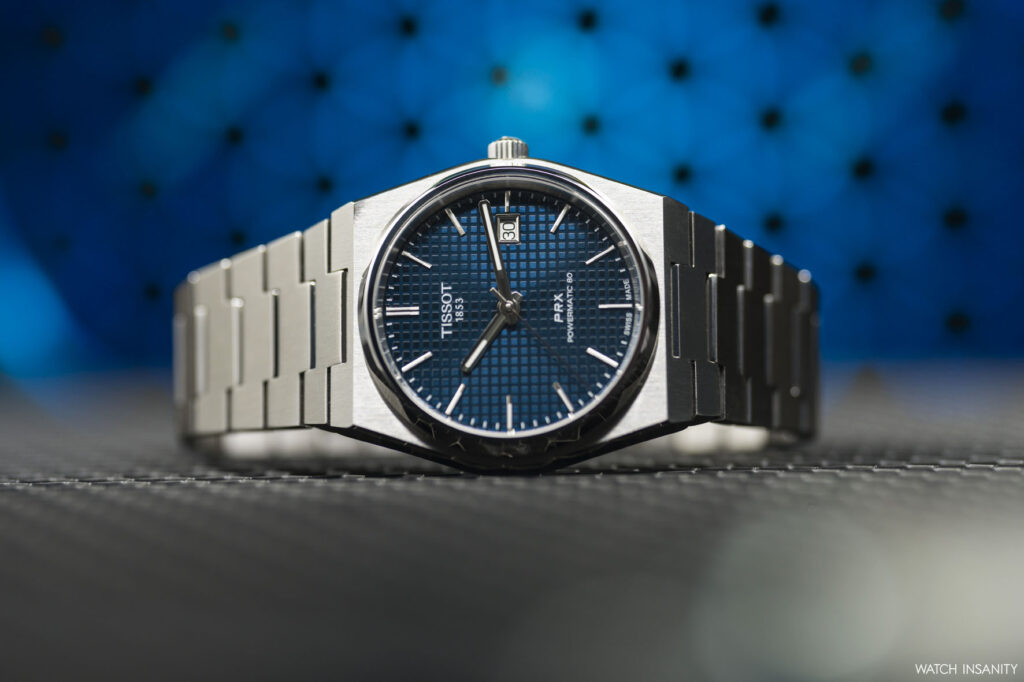
Powermatic 80 movements have a balance wheel frequency of 3 hertz, or 21,600 vibrations per hour, 1 hertz less than the original 2824-2 frequency. This downgrade is logic; lowering the frequency allows the movement to consume less energy and, combined with the use of a longer hairspring and a non-retracting escapement, causes a significant increase of the power reserve.
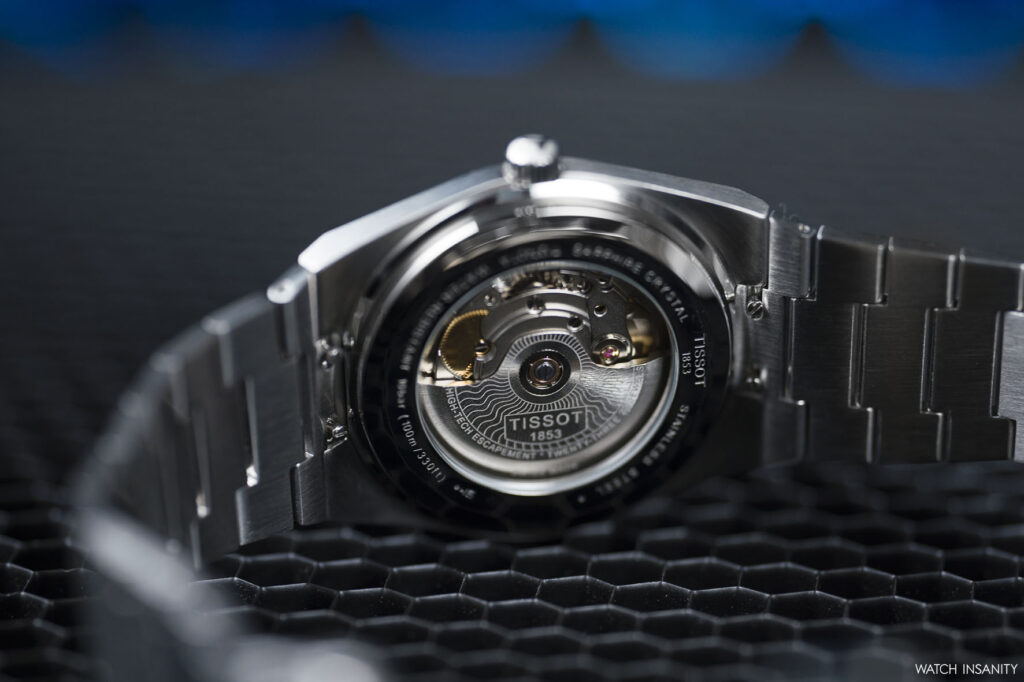
Some enthusiasts, and somehow nostalgic, have criticized this lowering of the frequency, aware of the fact that hi-frequencies improve the resistance of the balance wheel to shocks. Similarly, the use of Teflon for some parts of the escapement has made purists turn their noses up, satisfied as they were with the fact that this plastic material has the lowest known coefficient of friction (and we know the damage that friction causes to more delicate parts of a caliber …). Using the Powermatic 80 on the Tissot PRX was the most logical – it is a proprietary movement – and qualitatively better solution.
A GLIMPSE INTO THE CASE
Speaking of quality, the brand certainly didn’t spare energy in the finishes of the Tissot PRX Powermatic 80. Just take a look at three of the main parts of the watch – case, dial and bracelet – to realize this. The case is made of steel and alternates glossy finishes with satin finishes underlining the aesthetic research. The 40 mm in diameter are balanced by approximately 44 mm from lug to lug – measures which make the watch comfortable even on small wrists.
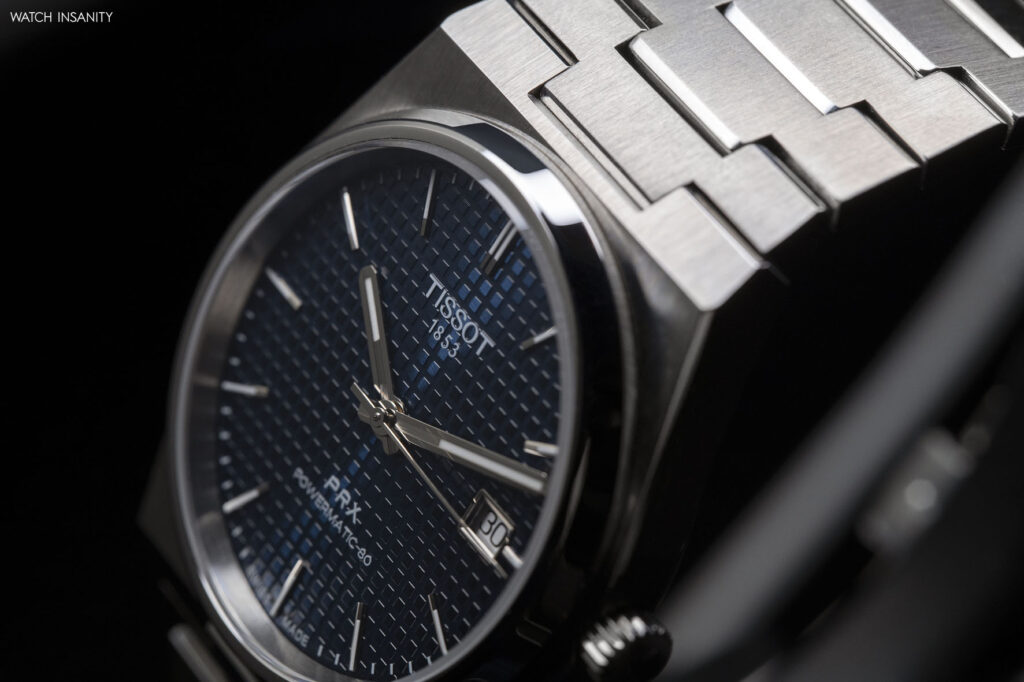
In the automatic version, the case is thicker than in the quartz version (10.9 mm vs. 10.4 mm), but it does not compromise how the watch fits under the cuff of a shirt. The case is water resistant to 10 bars, as the name of the timepiece reminds us since, in Roman numerals, X stands for 10 (P and R mean “precise” and “robust”).
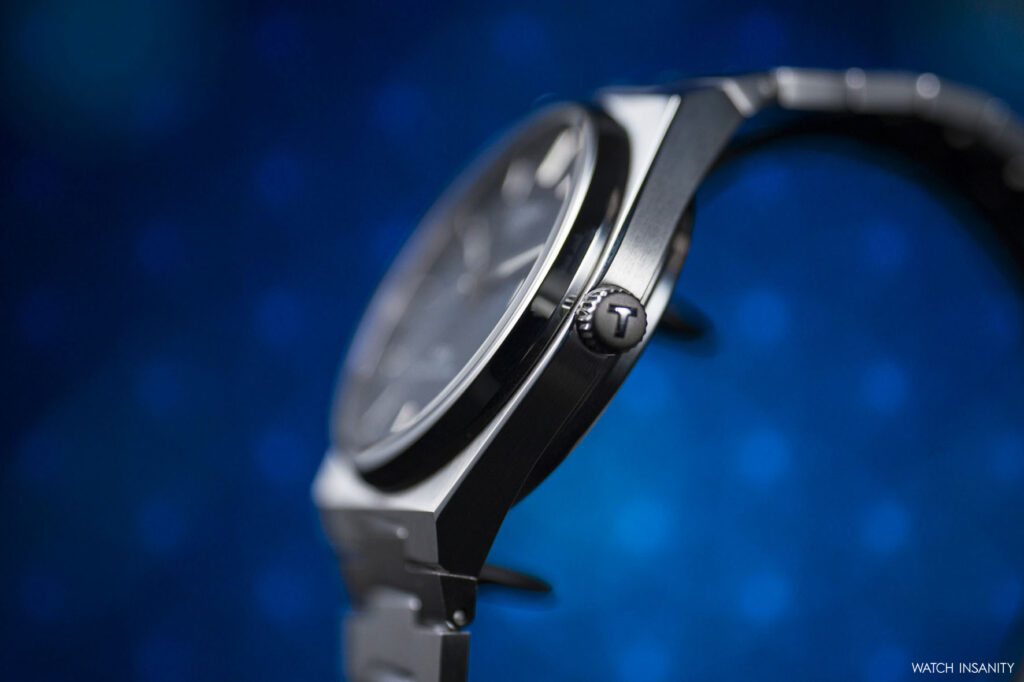
FLAWLESS DIALS
The dial of the Tissot PRX Powermatic 80 is simple, well finished, and above all legible. The applied indexes and baton hands are a must for those who want clarity in reading time; the dial has a tapisserie finish in black, blue and silver versions, and a smooth one in the shaded brown version. These last two colors are combined with the reference with pink gold PVD hands, indexes and smooth bezel (blue), and with the reference with rose gold indexes, hands and bezel (brown).
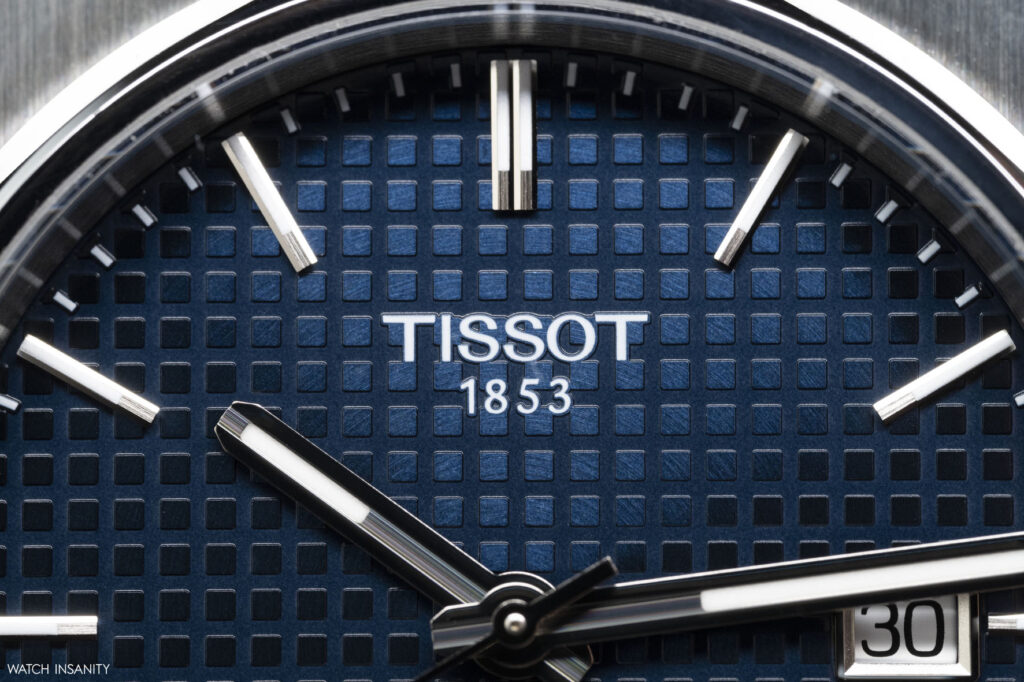
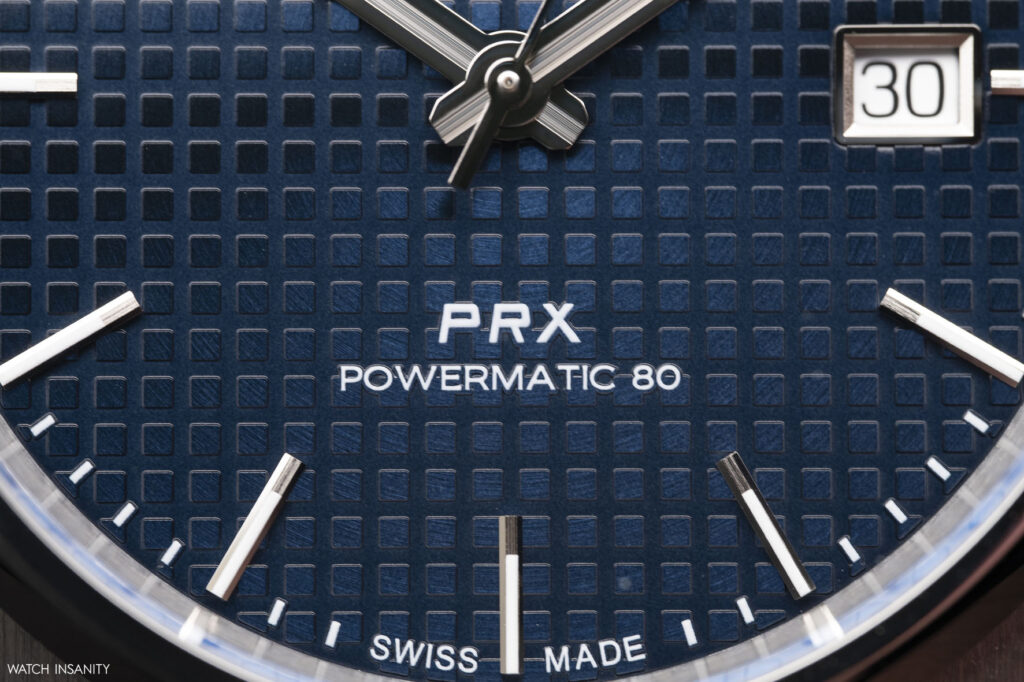
The dial is protected by a sapphire crystal with external anti-reflective treatment in the black, blue and silver versions, and anti-reflective on both sides in the most precious reference. In the “basic” versions of the Tissot PRX Powermatic 80, the brand has managed to keep the cost low despite this particular treatment. There is also a Sapphire crystal on the caseback, to show the movement at work.
BRACELET’S WEARABILITY
Lastly, the integrated bracelet, whose first link is integrated with the case, allowing Tissot to make it without traditional lugs. It is flexible, enveloping and ergonomic, as well as carefully finished, with satin meshes on the outside and polished ones on the inside. A process that recalls that of the case and protects the bracelet from streaks and scratches. The butterfly clasp also eases wearability: a deployant would have created thickness that would have been dystonic with the thin design of the bracelet.
Finally, let’s look at the prices. Considering the technical, aesthetic and workmanship characteristics, the different versions of the Tissot PRX Powermatic 80 represent good value for money. Thanks certainly to the fact that it is part of the Swatch Group; but also thanks to a customer-oriented commercial strategy, which provides high-end watches without losing quality.
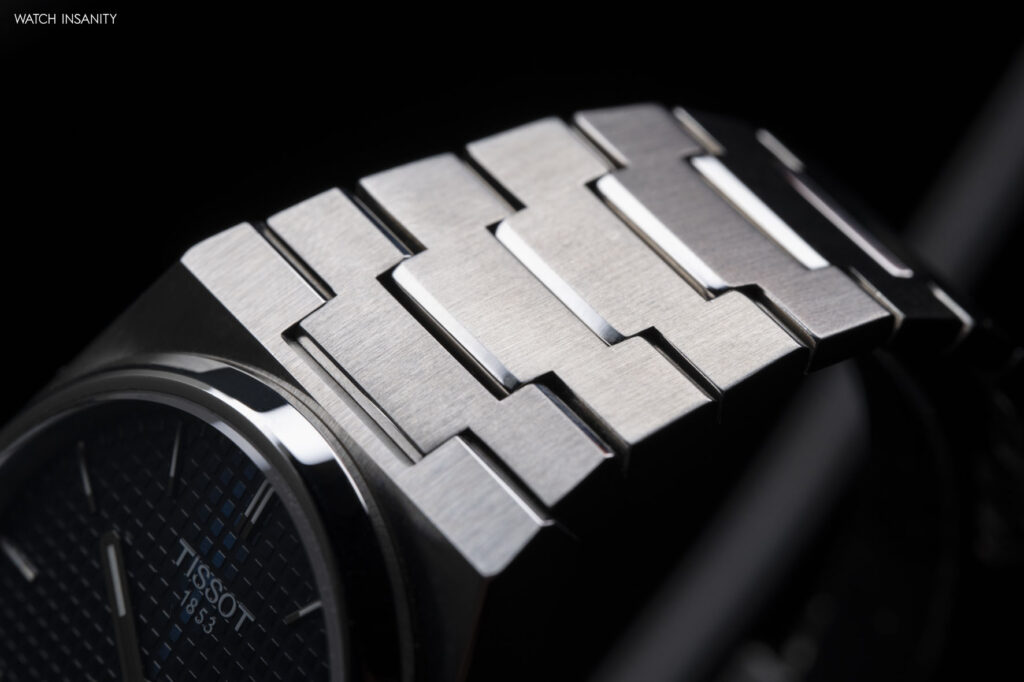
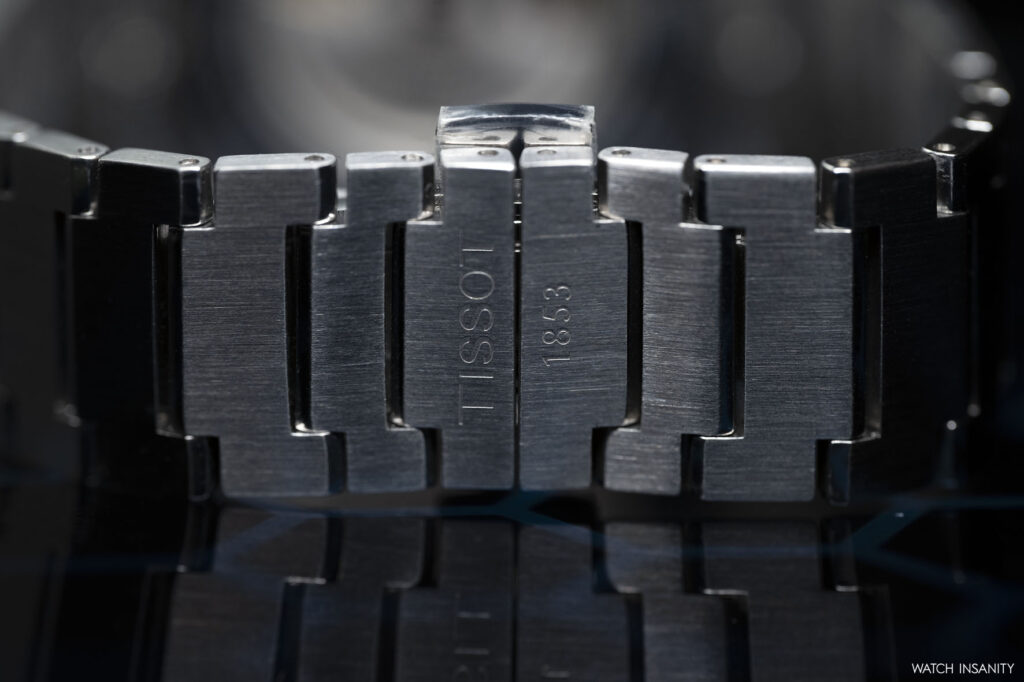
The steel versions cost 675 euros, those finished in PVD or with pink gold details are 710 and 1,995 euros respectively. Considering that the quartz references is worth 335 euros, the excellent work done by Tissot on this watch appears even more clearly.
By Davide Passoni

